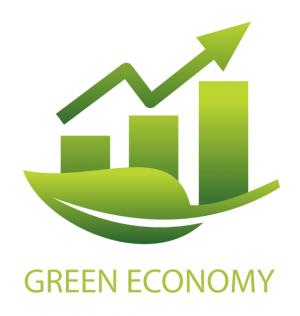Sustainable Sydney 2030
Description
Source: Shanghai Manual: A Guide for Sustainable Urban Development in the 21st Century (2010)
"In March of 2008, the City of Sydney Council released their Sustainable Sydney 2030 development plan that outlined the city's commitment to sustainable development. Collaborating with major stakeholders as well as the general public, the city determined that sustainable development could not only improve and reduce the city's environmental impact, but it would also stimulate economic growth and job creation, as well as promoting social equity and improving public health as well.
The plan includes three sections: Green,Global and Connected.
The Green part of the vision states that: Sydney will be internationally recognized as an environmental leader with outstanding environmental performance and new green industries driving economic growth. The Green vision also states the goals of reducing greenhouse gas emissions, reducing the region's urban footprint and protecting native ecologies.
The Global part of the Sydney vision begins with: Sydney will remain Australia's most significant Global City and international gateway with world-class tourism attractions and sustained investment in cultural infrastructure, icons and amenities. This section then describes the need to accommodate business activities connected to high quality jobs while supporting the quality of life needed to attract and maintain innovation.
The final vision section, Connected, adds: Sydney will be easy to get around with a local network for walking and cycling, and transit routes for connecting the City's villages, City Centre and the rest of Inner Sydney. The Connected section of the Sustainable Sydney 2030 vision affirms that the City's neighborhoods shall be strong focal points, and that the city will be diverse and inclusive, celebrating and supporting its indigenous people. The section concludes with a description of how the city will commit to partnerships and cooperation between government, the private sector and the community, as well with other Australian and international cities for cultural, trade and other exchanges
The Sustainable development plan also outlined many tangible and quantifiable goals for the city to achieve by 2030 as well as a framework for implementing policies that will ultimately achieve these goals.
SDGS & Targets
Goal 8
Promote sustained, inclusive and sustainable economic growth, full and productive employment and decent work for all
8.1
8.1.1
Annual growth rate of real GDP per capita
8.2
Achieve higher levels of economic productivity through diversification, technological upgrading and innovation, including through a focus on high-value added and labour-intensive sectors
8.2.1
Annual growth rate of real GDP per employed person
8.3
Promote development-oriented policies that support productive activities, decent job creation, entrepreneurship, creativity and innovation, and encourage the formalization and growth of micro-, small- and medium-sized enterprises, including through access to financial services
8.3.1
Proportion of informal employment in total employment, by sector and sex
8.4
Improve progressively, through 2030, global resource efficiency in consumption and production and endeavour to decouple economic growth from environmental degradation, in accordance with the 10-Year Framework of Programmes on Sustainable Consumption and Production, with developed countries taking the lead
8.4.1
Material footprint, material footprint per capita, and material footprint per GDP
8.4.2
Domestic material consumption, domestic material consumption per capita, and domestic material consumption per GDP
8.5
8.5.1
Average hourly earnings of female and male employees, by occupation, age and persons with disabilities
8.5.2
Unemployment rate, by sex, age and persons with disabilities
8.6
8.6.1
Proportion of youth (aged 15-24 years) not in education, employment or training
8.7
Take immediate and effective measures to eradicate forced labour, end modern slavery and human trafficking and secure the prohibition and elimination of the worst forms of child labour, including recruitment and use of child soldiers, and by 2025 end child labour in all its forms
8.7.1
Proportion and number of children aged 5‑17 years engaged in child labour, by sex and age
8.8
Protect labour rights and promote safe and secure working environments for all workers, including migrant workers, in particular women migrants, and those in precarious employment
8.8.1
Fatal and non-fatal occupational injuries per 100,000 workers, by sex and migrant status
8.8.2
Level of national compliance with labour rights (freedom of association and collective bargaining) based on International Labour Organization (ILO) textual sources and national legislation, by sex and migrant status
8.9
By 2030, devise and implement policies to promote sustainable tourism that creates jobs and promotes local culture and products
8.9.1
Tourism direct GDP as a proportion of total GDP and in growth rate
8.10
Strengthen the capacity of domestic financial institutions to encourage and expand access to banking, insurance and financial services for all
8.10.1
(a) Number of commercial bank branches per 100,000 adults and (b) number of automated teller machines (ATMs) per 100,000 adults
8.10.2
Proportion of adults (15 years and older) with an account at a bank or other financial institution or with a mobile-money-service provider
8.a
8.a.1
Aid for Trade commitments and disbursements
8.b
By 2020, develop and operationalize a global strategy for youth employment and implement the Global Jobs Pact of the International Labour Organization
8.b.1
Existence of a developed and operationalized national strategy for youth employment, as a distinct strategy or as part of a national employment strategy
SDG 14 targets covered
Deliverables & Timeline
Resources mobilized
Partnership Progress
Feedback
Action Network


